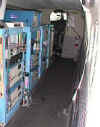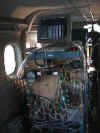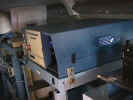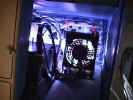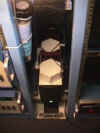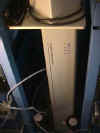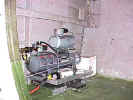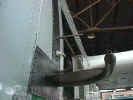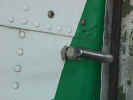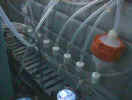de Havilland
Twin Otter DHC-6
Instrument
Platform
A de Havilland Twin Otter DHC-6 Twin Otter as depicted in
Figure 1, has been fitted
with inlets and instrument racks for the sampling
program. The aircraft has been
inspected and certified by the Federal Aviation Administration (FAA) to operate
in the Restricted category during air pollution sampling missions.
|
Figure 1. de Havilland DHC-6 Twin Otter. |
|
Figure 2. Interior of the aircraft’s cabin showing the four instrument racks. |
|
| Figure 4. NO2 photocell. |
Figure 5. Interior view of NO2 photolytic cell. |
|
Figure 5. Hydrocarbon vacuum pump located between racks 1 and 2. |
Figure 6. TSI 3 wavelength integrating nephelometer. |
|
Figure 7. Two 2500 watt inverters used to power air pollution sampling instrumentation. |
Figure 8. “Zero air” compressor, located in the aft baggage compartment of the aircraft. |
|
|
Figure 10. NOy inlet. This inlet is located below the particulate probe on the port side of the aircraft, just forward of the plane of the propeller. |
|
Figure 11. Glass manifold for gas measurements. Air from the sampling probe enters the glass manifold and is then ducted off to various analytical instruments. |

